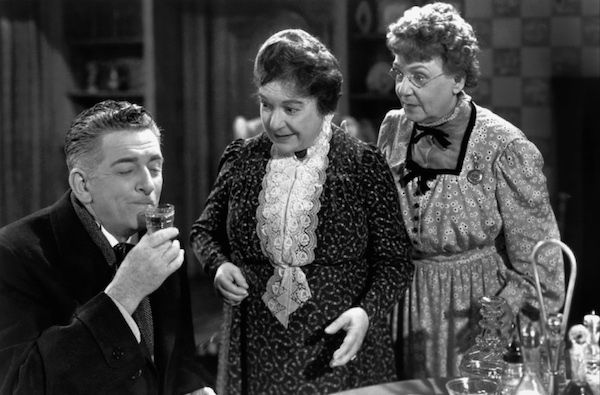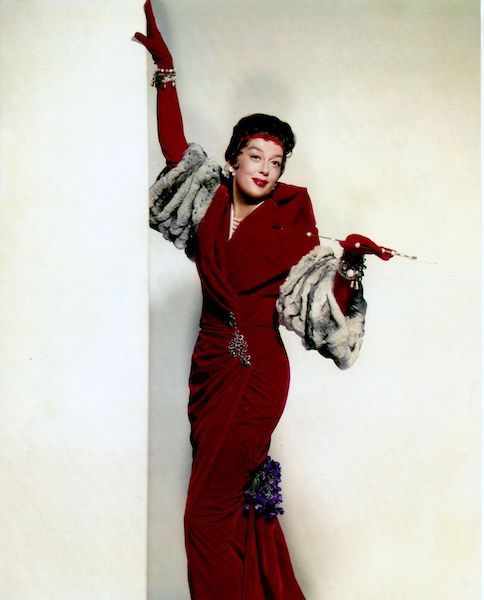Aunts also hold several particular places in literature. They are truth-tellers, boon-granters, caregivers (or lack-of-care-givers in some cases), and partners in crime — sometimes literally. Mothers are often absent in literature in order to provide a reason for a child to set out on their own before they usually would, and aunts often provide an adult figure where a birth parent would not suffice, in order to move the plot along.
The Caregiving Aunt
The first caregiving aunt who comes to mind is Aunt May from Spider-man. Peter Parker’s parents have never been part of his story; Aunt May and Uncle Ben stepped in to raise him, and when Ben died, it became just May and Peter. They are peers in some ways, which allows them to relate on a different level than if they were mother and son. We’ve also got the Aunts from the utterly delightful Dial A for Aunties. In this case, Meddelin’s mother is present, along with her three sisters. Meddy’s mother navigates her parental responsibility along with her sisters, and the quintet of women have a complex, swirling relationship that had me laughing and nodding throughout. In this case, the aunts serve as foils to one another as well as caregivers; it is almost as if Meddy has four mothers, but also four aunts and no mother. The dynamics are further complicated by Indonesian expectations surrounding the honor due to the elder generation from the younger, and to elders within a generation. Since Meddy’s mother is not the oldest sister, her relationship to First Aunt drives Meddy’s relationship as well.
The Truth-Telling and Boon-Granting Aunt
One of the perks of being an aunt is being able to tell it like it is, which is not always something parents feel comfortable or empowered to do. When mothers are present in literature, an aunt often acts as a foil. In the case of Little Women, for example, Marmie is that rare thing: a wonderful, loving mother. The complications in the plot come from other sources, including poverty, illness, an absent father, and the navigation of relationships between the titular girls. Aunt March, the March girls’ great aunt, is elderly, lonely, and wealthy. This combines to also make her cantankerous and demanding, which means that she clashes with her companion: her great niece, Jo — by far the most independently-minded of the March girls. When Beth contracts scarlet fever, Amy — the youngest — becomes Aunt March’s companion instead, and this shift changes the dynamics in several key relationships within the book. Aunt March uses the privilege of her age and wealth to tell the March girls truths that they would not otherwise hear, and to take Amy on a coveted trip to Europe. In Lisa See’s Snow Flower and the Secret Fan, Aunt is the one who teaches Lily the secret writing of women, while Mama is responsible for teaching her daughter to behave in the patriarchal society of early 19th century China. Aunt’s position as a close relative but not a mother allows her to bring Lily into the secrets of women’s society without it reflecting on how Lily is being “brought up.” We see this played out in many aunt/niece relationships, especially in Asian literature where familial roles can be strictly proscribed.
The Magical Aunt(s)
There is a whole category of Magical Aunts we could dive into, but I’ll limit it to my favorites: Aunt Jet and Aunt Frances in Practical Magic. Aunts — especially childless aunts — can be magical in ways that mothers often cannot. This goes alongside the tradition of conjure women and midwives being one step removed from a nuclear family or village. The Owens women have been blamed for everything that goes wrong in their small New England town for over 200 years, but Jet and Frances have embraced their witchiness in ways that I can only aspire to emulate. They are wild and strange and — in the case of the practically perfect 1998 movie — make a truly magical midnight margarita. They rank among my favorite aunts for their ability to remain true to their roots and themselves.
The Awful Aunts
Another way that an aunt can drive a plot is by being awful, and I would be remiss if I didn’t address the space that truly terrible aunts hold in the plots of literature. One of our favorite terrible aunts is, of course, Lady Catherine de Bourgh from Pride & Prejudice. Her supercilious attitude toward Lizzie is at least a secondary reason that she and Mr. Darcy end up together. Lady Catherine’s actions and pronouncements allow the reader to both understand some of Darcy’s early behavior and to cheer when he ultimately pollutes the shades of Pemberley by asking Lizzie to be his wife. Just like all humans, aunts can be complex and more than one thing. In Forest of a Thousand Lanterns, Guma is both a wicked and magical aunt, pushing antiheroine Xifeng to fulfill her destiny to become Empress at any cost. Guma’s position in Xifeng’s story serves multiple purposes, the primary two are: to provide Xifeng with her quest and to influence her character, without being responsible for her existence in a way that requires Xifeng to adhere to a traditional role.
My Favorite Aunts
And thus we come to the end of our exploration of the role aunts play in literature. I will close with three of my absolute favorite aunts — although the third spot absolutely goes to the collective of Aunts Big, Second, and Fourth from the aforementioned Dial A for Aunties.
The Aunts From Arsenic & Old Lace
Aunts Abby and Martha are goals, and I will not be taking questions at this time. I can only aspire to be as wonderful, caring, and devious as they are; as clever and unscrupulous, as quick-witted and as dedicated to keeping the peace.
Auntie Mame
Patrick Dennis’s favorite aunt is the zany, rich, eccentric, modern, and deeply fantastic Mame. And how could she not be? She sends him to the most modern of schools, takes him on grand adventures, and teaches him things he would never learn if he were part of a traditional family. She also has a spectacular sense of fashion and cares not a whit what other people think of her, as any good aunt should. I’ve covered a lot of aunts, and of course barely even scratched the surface of how the aunt/nibling relationship can be pivotal in literature. I didn’t even get into how aunts are portrayed in African, Middle Eastern, or non-Chinese/Indonesian Asian literature. There’s so much to explore. Now go call your favorite aunt; I’m sure she’d love to hear from you.


